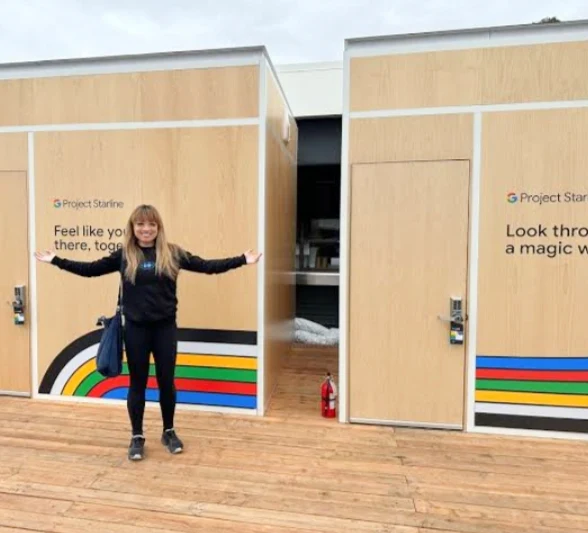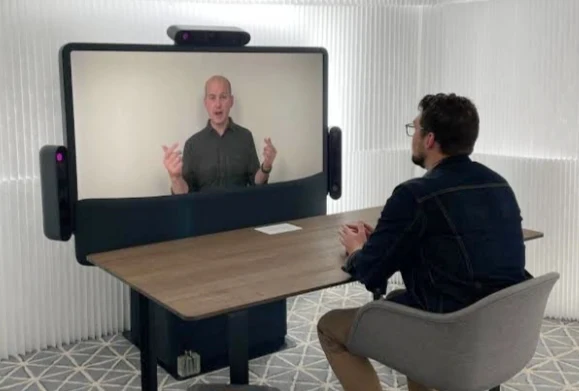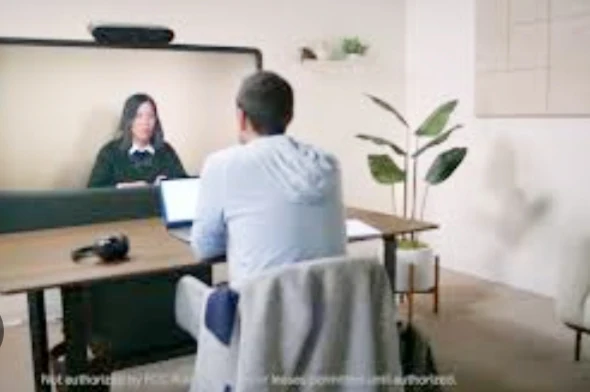Project Starline: A Timeline of Google's Immersive Video Journey
Project Starline, by Google, is a pioneering effort aiming to redefine video communication. This innovative system promises to create a more realistic and immersive experience, blurring the lines between physical and virtual interaction. But how did this futuristic concept come to be? Let's delve into the historical timeline of Project Starline:
Project Starline Timeline
| Year | Milestone | Description |
|---|---|---|
| Early 2010s | Conceptualization and Research | Google researchers begin exploring the potential of advanced technologies like 3D capture, spatial audio, and high-resolution displays to revolutionize video conferencing. |
| Mid-2010s | Technology Development | Google invests heavily in R&D, focusing on advancements in light field displays, AI image processing, and real-time compression techniques. |
| Late 2010s | Internal Prototyping | Initial, non-functional prototypes are developed to test core functionalities and explore different design approaches. |
| Early 2020s | First Functional Prototype Unveiled | Google unveils a functional prototype of Project Starline at a company event, showcasing its core capabilities. |
| Present Day (2024) | Ongoing Development and Testing | Project Starline remains under development, with Google refining the technology and exploring potential applications. Public availability is yet to be announced. |
Looking Ahead: The Future of Project Starline
While Project Starline is still in its early stages, the potential it holds is undeniable. As the technology matures and production costs decrease, we can expect it to have a significant impact on various sectors:
- Business Communication: Imagine conducting high-level meetings or brainstorming sessions in a virtual environment that feels indistinguishable from an in-person gathering. Project Starline has the potential to revolutionize remote collaboration and decision-making.
- Education: Project Starline could transform remote learning experiences by fostering a stronger sense of connection between students and teachers. Imagine attending virtual lectures or participating in interactive seminars as if you were physically present in the classroom.
- Social Interaction: Project Starline might bridge the gap for geographically dispersed families and friends. Virtual gatherings could feel more natural and engaging, fostering closer connections despite physical distance.
The journey of Project Starline represents Google's commitment to pushing the boundaries of communication technology. As it continues to evolve, it has the potential to redefine the way we connect with each other in a virtual world.
Project Starline by Google: A Window into the Future of Video Communication
Project Starline is an experimental video conferencing system being developed by Google. It aims to revolutionize video calls by creating a more realistic and immersive experience that makes users feel like they're in the same room with the person they're talking to, even if they're miles apart.
Here's how it works:
Project Starline utilizes a combination of cutting-edge hardware and software to achieve its remarkable effects. Multiple high-resolution cameras and depth sensors capture a real-time 3D model of the person on the other end of the call. This model is then processed by advanced AI algorithms that create a photorealistic image, which is then projected onto a special light field display.
The light field display is what truly sets Project Starline apart from traditional video conferencing systems. Unlike a regular screen, which only projects a flat image, a light field display can project depth information. This allows users to see the person on the other side of the call in three dimensions, with a natural sense of perspective that adjusts as they move their head.
The Benefits of Project Starline
- Increased Presence: Project Starline's 3D technology fosters a stronger sense of presence, making video calls feel more natural and engaging.
- Improved Non-Verbal Communication: Subtle cues like posture and eye contact, which are often lost in traditional video calls, are more readily apparent in Project Starline, enhancing communication.
- Reduced Video Call Fatigue: The more natural experience of Project Starline can potentially reduce the fatigue often associated with extended video calls.
Project Starline: Still Under Development
While Project Starline holds immense promise for the future of video communication, it's important to note that it's still in the experimental phase. The current prototypes are large and expensive, and it will likely be some time before the technology becomes widely available.
| Feature | Description |
|---|---|
| Technology | Light field displays, AI image processing |
| Result | 3D video calls with a strong sense of presence |
| Benefits | Improved communication, reduced video call fatigue |
| Status | Experimental |
Project Starline represents a significant leap forward in video conferencing technology. As it continues to develop, it has the potential to transform the way we connect with each other remotely.
Project Starline: A Look Under the Hood of Google's Immersive Video Tech
Project Starline, by Google, is an ambitious project aiming to revolutionize video conferencing. It goes beyond the limitations of flat screens, creating a more realistic and immersive experience that makes users feel like they're sharing the same space with the person they're calling, even when miles apart.
So, how does this magic happen? Let's delve into the technological wizardry behind Project Starline:
Key Technologies at Play
| Technology | Function |
|---|---|
| High-Resolution Cameras & Depth Sensors | Capture a real-time, detailed 3D model of the person on the other end of the call. |
| Advanced AI Image Processing | Analyzes the captured data to create a photorealistic representation of the person. |
| Light Field Displays | Project the 3D model with depth information, allowing for a natural sense of perspective that adjusts with head movement. |
| Spatial Audio | Creates a realistic soundscape that complements the visuals, further enhancing the feeling of being in the same room. |
| Real-time Compression | Efficiently transmits the high-resolution data stream for smooth video conferencing. |
Breaking Down the Tech
-
Capturing Reality in 3D: Multiple high-resolution cameras work together with depth sensors to capture a comprehensive picture of the person on the other side. This creates a point cloud, a collection of data points that define the person's 3D form.
-
AI Paints a Lifelike Picture: Powerful AI algorithms take the captured data and transform it into a photorealistic image. This image accurately represents the person's appearance, including details like facial expressions and clothing texture.
-
A Display Beyond the Flat Screen: Traditional video conferencing systems project a flat image onto a screen. Project Starline utilizes light field displays, a revolutionary technology that projects both color and depth information. This allows viewers to see the person in three dimensions, with a natural sense of perspective that changes as they move their head. Imagine looking around someone virtually, just as you would in real life!
-
Spatial Audio for Immersion: Project Starline incorporates spatial audio, which creates a realistic soundscape that complements the visuals. Sounds appear to come from the direction of the speaker on the other side, further enhancing the feeling of being in the same room.
-
Real-time Compression Magic: To facilitate smooth video calls, Project Starline employs real-time compression techniques. This allows for the transmission of the high-resolution 3D data stream without compromising quality or introducing lag.
Project Starline: A Glimpse into the Future
While Project Starline is still under development, the technologies it utilizes represent a significant leap forward in video communication. As these technologies mature and become more affordable, we can expect them to revolutionize the way we connect with each other remotely. Imagine conducting business meetings, attending classes, or even catching up with loved ones in a truly immersive and lifelike way! Project Starline offers a glimpse into a future where video calls feel more like face-to-face interactions, fostering stronger connections and a more natural communication experience.
Frequently Asked Questions for Project Starline
Project Starline is a cutting-edge communication technology developed by Google that aims to create a more immersive and natural video calling experience. Here are some common questions and answers:
General Questions
- What is Project Starline?
- Project Starline is a new type of video calling technology that uses advanced hardware and software to create a 3D holographic experience of the person you're talking to.
- How does Project Starline work?
- Project Starline uses a combination of cameras, projectors, and special lenses to capture and display a person's likeness in a 3D space. This creates a more realistic and engaging video call experience.
- When will Project Starline be available to the public?
- Google has not announced a specific release date for Project Starline. However, it is currently being tested in select locations.
Technical Questions
- What hardware is required for Project Starline?
- Project Starline requires specialized hardware, including a large video display, a projector, and a camera system.
- Can I use Project Starline with my existing video calling app?
- Project Starline is a standalone technology and does not integrate with existing video calling apps.
- Is Project Starline compatible with all devices?
- Project Starline is currently designed for use with specialized hardware and may not be compatible with all devices.
Features and Benefits
- What are the benefits of using Project Starline?
- Project Starline offers a more immersive and natural video calling experience, making it feel like you're in the same room as the person you're talking to.
- Can I control the camera angle in Project Starline?
- Yes, Project Starline allows you to control the camera angle to get the best view of the person you're talking to.
- Can I use Project Starline for meetings or conferences?
- Yes, Project Starline can be used for meetings and conferences, providing a more engaging and collaborative experience.



